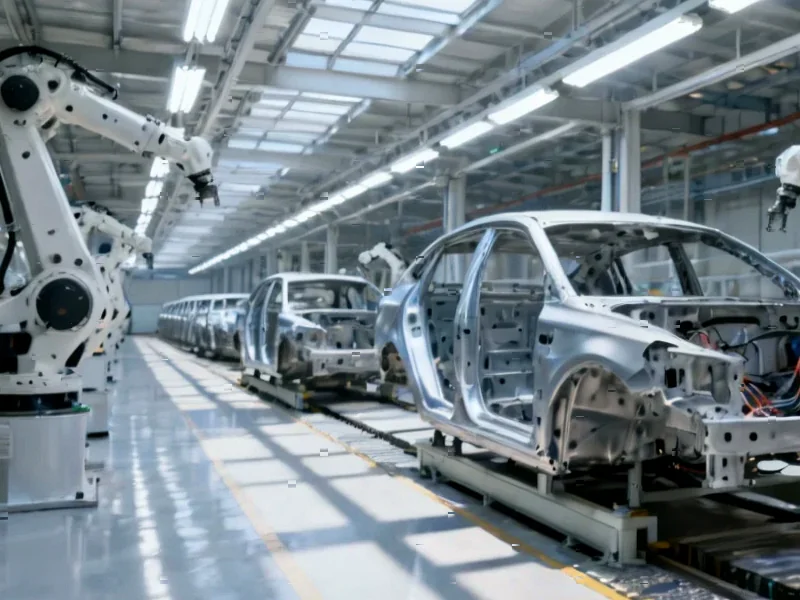According to Business Insider, BYD reported a 12% year-over-year decline in global sales for October 2025, marking the second consecutive monthly drop for the electric vehicle giant. The company’s profits fell by approximately one-third year-over-year in recent earnings, and its stock price has plunged around 36% since hitting a record high in May. Meanwhile, competitors including Geely, Xpeng, and Nio all reported record October sales, with Geely’s success driven by its low-cost Galaxy brand and the $9,250 Xingyuan compact EV that directly competes with BYD’s Seagull. BYD’s overseas sales surged 169% last month, providing a bright spot as the company builds factories in Hungary and Turkey and plans 1,000 new European stores next year. This divergence between domestic struggles and international growth signals a pivotal moment in China’s EV evolution.
The Inevitable Market Consolidation Accelerates
What we’re witnessing is the long-predicted consolidation of China’s overcrowded EV market finally materializing. With over 100 manufacturers competing for market share, the industry was fundamentally unsustainable. BYD’s simultaneous domestic decline and competitors’ record performances like Xpeng’s October deliveries reveal that market share isn’t simply growing—it’s being redistributed from established leaders to agile challengers. The government’s crackdown on excessive discounting has removed one of the primary tools manufacturers used to maintain volume, forcing genuine competition on product differentiation and technological innovation rather than price alone.
Where BYD Faces Maximum Pressure
The competitive landscape has shifted dramatically in just twelve months. Geely’s success with the Galaxy brand demonstrates how effectively established automotive conglomerates can leverage their scale and manufacturing expertise to challenge BYD’s dominance in the affordable segment. Meanwhile, Nio’s premium positioning and Xpeng’s technological focus are carving out sustainable niches. Most concerning for BYD is that Tesla has maintained relatively stable China sales of 71,000 vehicles in September, showing resilience despite the intense competition. The emergence of tech giants like Xiaomi as credible EV makers adds another layer of complexity, bringing software expertise and ecosystem integration that traditional automakers struggle to match.
Overseas Expansion as Survival Strategy
BYD’s international growth isn’t just a bonus—it’s becoming essential for survival. The 169% overseas sales surge and Citi’s projection of nearly 1 million export vehicles this year represent a strategic pivot that may determine the company’s long-term viability. Europe has emerged as the primary battleground, where BYD actually outsold Tesla in August despite the US market remaining effectively closed due to regulatory barriers. The Hungary and Turkey factory investments signal a commitment to localized production that could help BYD avoid the tariff walls and political resistance that often hinder Chinese manufacturers in Western markets. This global diversification provides crucial insulation from domestic volatility.
Ripple Effects Across the EV Ecosystem
The consolidation pressure extends far beyond automakers to their entire supply chain. Battery manufacturers, chip suppliers, and component makers face uncertain demand patterns as market leadership shifts. Leapmotor’s delivery growth and Geely’s record sales indicate that the Chinese consumer is becoming more sophisticated, demanding specific features and brand identities rather than simply opting for the most affordable option. This maturation of consumer preferences will force all players to develop clearer brand positioning and sustainable business models beyond initial customer acquisition.
The Path Forward in a Shrinking Market
As BYD executive Stella Li predicted, the industry appears headed toward a scenario where fewer than 20 manufacturers survive. The winners will be those who can balance domestic scale with global ambition, technological innovation with cost control, and brand differentiation with market accessibility. BYD’s challenge exemplifies the transition from growth-at-all-costs to sustainable profitability—a shift that will separate temporary market leaders from long-term survivors. The companies that navigate this consolidation while maintaining competitive product launches like Geely’s Xingyuan and adapting to Tesla’s enduring appeal will define the next chapter of global electric mobility.




